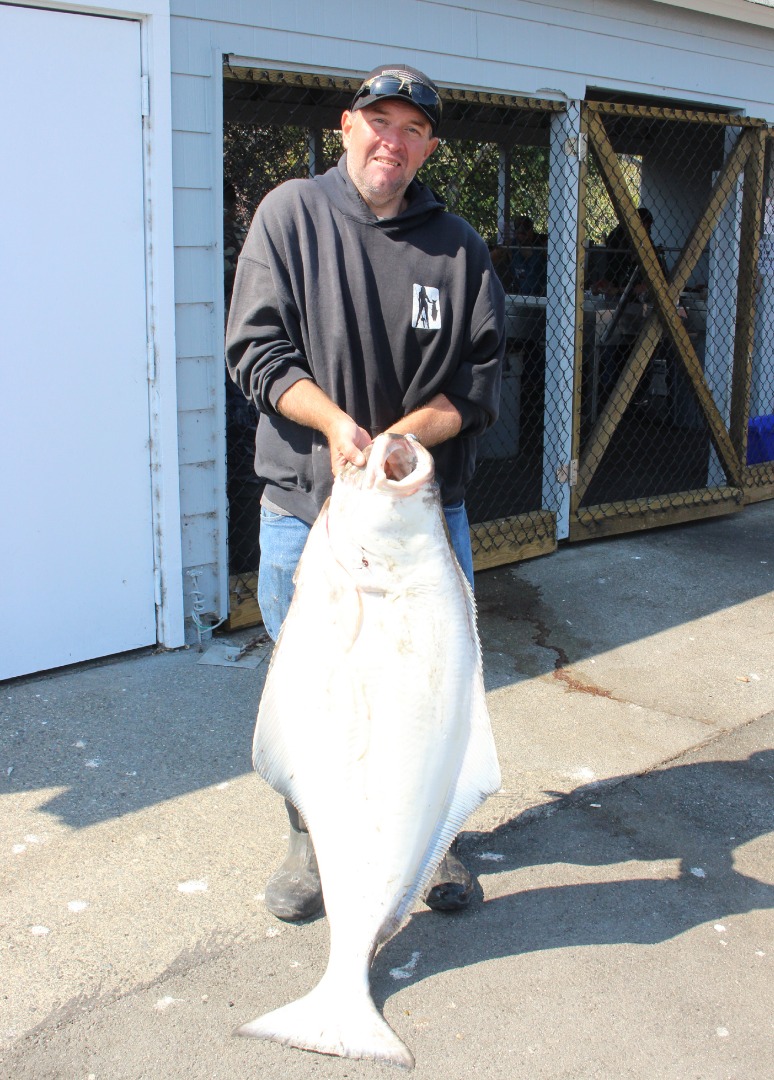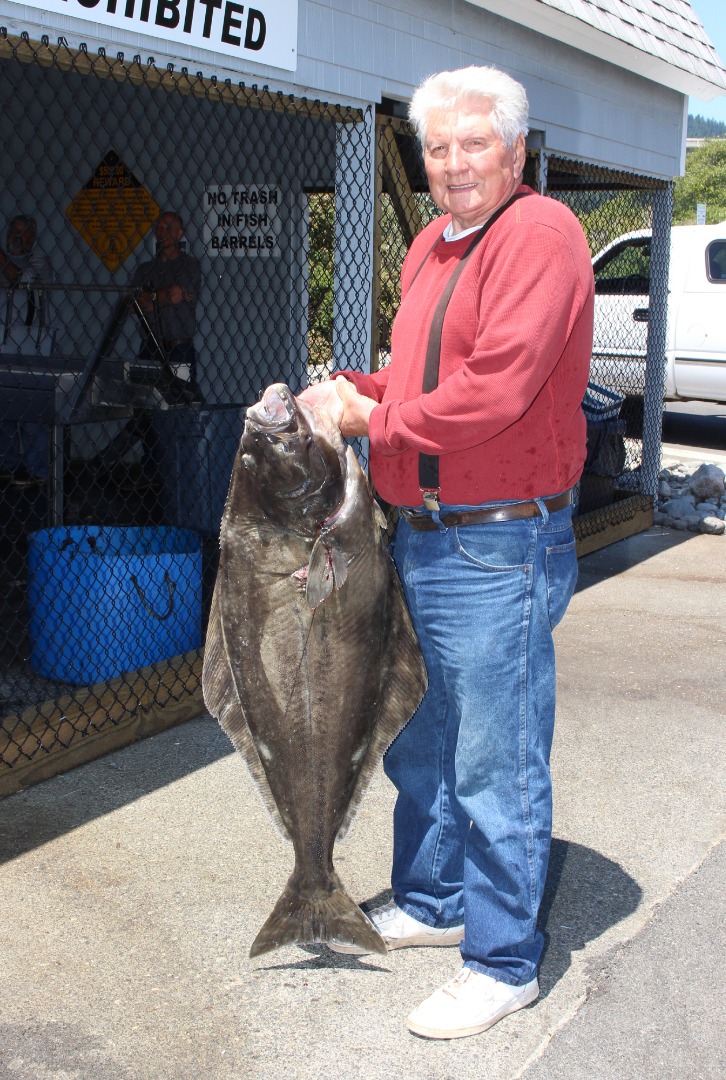From Sportfishing
Fish Report for 9-7-2018

Rogue Bay Reigns King for Chinook
9-7-2018
Larry Ellis
Salmon fishing in most Oregon rivers and estuaries has been somewhat lackluster as far as August and September goes. At the northern end of the state, Buoy 10 was only so-so at best and Tillamook Bay wasn't far behind.
But when it comes to the southern end of Oregon, I would rate the Rogue Bay a solid 10 for Chinook ranging anywhere from 2-year-old jacks, 8 to 10 pound 3-year olds and 20 to near 30 pound 4-year-old Chinook.
And September is a month when the bulk of the fishing populace hightail it back home after the Labor Day weekend, cutting the boat traffic down by at least one half, and a less-crowded bay leads to more landed fish per boat by causing fewer tangled lines.
"We've had three strong days for Chinook," said Jim Carey of the Rogue Outdoor Store on Thursday. "And not surprisingly, after the 3-day weekend a lot of people left. So we're having great fishing both for fall Chinook and we're having phenomenal summer steelhead action too. Most of our Chinook have been in two size ranges - around 14 pounds and 24 pounds."
There has also been a relatively high return of jacks, which is a good indicator of next year's season because a high percentage of the 2-year olds will be remaining at sea and returning next year as 3-year olds. Similarly, a certain percentage of 3-year-old kings will remain in the ocean, only to return to the Rogue next year as 4-year-olds. So all in all, the Rogue Bay is setting itself up for a good season next year.
September is also the month when the occasional 5-year-old monster salmon goes to the scales as well. Another well-known guide has had a phenomenal season this year.
"All of September has been really awesome," says John Anderson of Memory Makers Rogue River Guide Service on Wednesday. "I had 3 kings and 2 jacks on Sunday, 3 kings and 2 jacks on Monday, and on Tuesday I had 3 kings. And I just put another one in the box just now. So the fishing is great. I actually think that the fishing is better than it was in August."
And August had some of the best fishing the Rogue Bay has seen in 20 years.
"And they're nice-size fish right now," notes Anderson. "We're talking about Chinook in their 20's. I had one fish that was pretty close to 27 pounds. There are some really nice-size fish out there right now. I've got a lot of people who want to go fishing, but I'm booked solid."
The dredge has been gone for about two weeks now. They have widened the jaws considerably so that it is significantly deeper from the north jetty to the south jetty, and clear up past the Coast Guard station.
This badly-needed dredging has it's good points and bad points.
The good point is that boats can now fish the mouth when the bay gets warm, waiting for those influxes of icy-cold saltwater to put them back on-the-bite.
The bad point is that boats are getting a little to brave for their own good and they are pushing the envelope by going too far toward the turbid, rough entrance at the mouth. So the operative catch phrase is, "use caution."
"It's been swamping a few boats," warns Anderson. "It swamped one on Sunday and we had a drift boat go down today, but everybody has made it so far."
So use caution when heading downriver and know where to turn around to point the bow of your boat upriver. To play it safe, do not head toward the ocean past the sand spit. Only turn your boat around when you get just past the north jetty Cathouses. And to play it extra safe, don't head to the south jetty until well after you have motored across the Cathouses while heading upriver.
"The dredging has made a lot of improvements to the bay, but unless you know where everything is, you can get in trouble in a hurry," says Anderson.
The traditional setup for trolling the Rogue Bay is to use either a naked anchovy on an anchovy/spinnerbait setup, or to use a number 4 green-on-green spinner blade on top of the setup. The next-best favorite spinner blade would be the diagonally painted chartreuse/green configuration, also known as the Oregon Duck. Number 3 or 4 Gold Hildebrandt spinner blades made by Yakima Bait are also must-have spinner blades in your arsenal.
Bottom Fishing Superb Out of Brookings
Before gale force winds kicked up during the Labor Day weekend, and during the last several days, anglers have been catching limits of rockfish and lingcod out of the Port of Brookings Harbor.
The fishing was wide open on the Friday before Labor Day, but anglers have been struggling for their limits as of late. You'll see one party of anglers filleting limits of rocks and lings, while another group of fishers will have half limits or near limits.
So when the fishing throws you curve balls, hit 'em out of the park by using lighter line in the 12-to 15-pound category. You may lose a few of the big ones by using lighter tackle, but I guarantee that you'll get a lot more hookups to make up for the ones that are lost.
Most anglers are heading downhill from the jaws, toward beyond Akin Point and beyond to get their bottom-grabbers.
Remember that the retention of Cabezon in Oregon is now closed, due to the harvest cap being met early in mid-August.
The limit is 4 rockfish (no minimum size limit) and 2 lingcod (minimum size limit of 22 inches).
There have also been reports of California halibut being caught just outside the breakers off of Sporthaven Beach and other sandy/rocky-type venues. The Winchuck area is another great area to try for the Cali-flatties. If you get so lucky as to hook into one of these tasty flounders, it applies to your 25-fish daily flatfish limit.
In the Southern Oregon Subarea, there have also been a few large Pacific halibut being caught in 230-feet of water off of Bird Island and the Thomas Creek Bridge. At this point in time, it is looking like anglers will be able to fish for Pacifics all the way through October 31, when the season for that particular species closes.
"I expect it (the Pacific halibut season) to go through the regulatory closure of October 31," said Lynn Mattes, halibut and groundfish project leader for ODFW. "There's about 3,500 pounds left, which is about 60 percent of the quota."
Tight lines!
Larry Ellis, author, writer, columnist and photographer has had a 50-year passion for fishing in California and Oregon's saltwater and freshwater venues. He is a well-known writer for Oregon, Washington and California Fishing and Hunting News, Northwest Sportsman, California Sportsman and Pacific Coast Sportfishing. He currently writes monthly for Salmon Trout Steelheader Magazine, and is the author of two books, "Plug Fishing for Salmon" and "Buoy 10, the World's Largest Salmon Run." Both books can be bought from Amato Publications (amatobooks.com), Amazon and eBay. Ellis particularly loves living in his hometown of Brookings, Oregon - The heart of salmon country and gateway to fishing paradise.
< Previous Report Next Report >
More Reports
Salmon Bite Full-On in the Rogue Bay
Rogue Bay
7-21-2018
It's only just gotten started and already people are saying that Chinook fishing in the Rogue bay is approaching days...... Read More
Rogue Bay Breaks Wide Open- Gold Beach
Rogue River- Lower
7-14-2018
Trying to keep a salmon off your hook in the Rogue bay last week was like telling water not to...... Read More

Website Hosting and Design provided by TECK.net